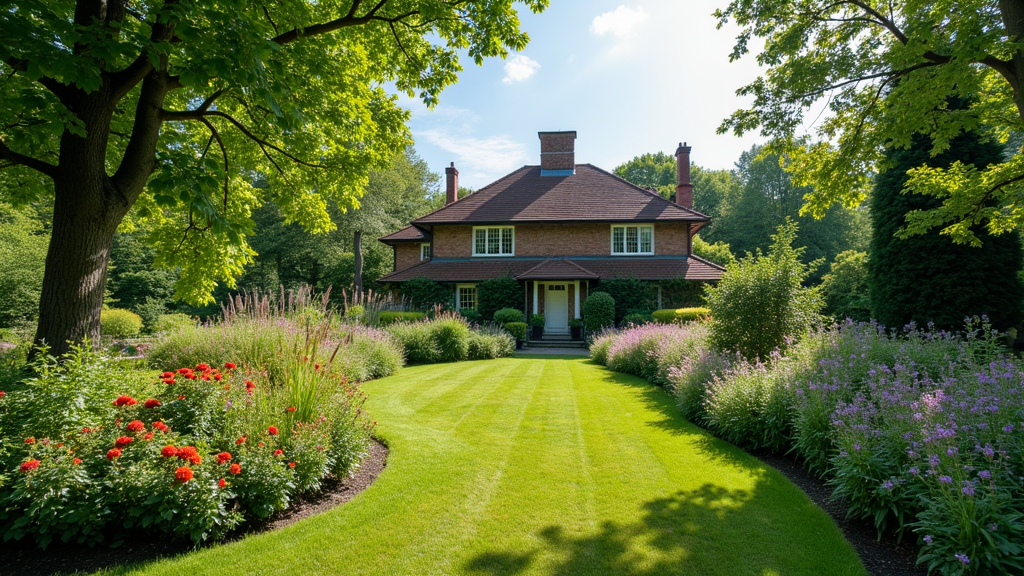Creating a beautiful yard doesn't have to be a full-time job. In fact, many homeowners in Greensboro are discovering the benefits of low-maintenance landscaping. Imagine spending your weekends relaxing rather than mowing the lawn or pulling weeds! In this article, we will explore how you can create a low-maintenance landscape in your Greensboro yard that is not only beautiful but also sustainable and easy to care for.
Why Choose Low-Maintenance Landscaping?
Low-maintenance landscaping is becoming increasingly popular among homeowners who want to enjoy their outdoor spaces without the constant upkeep. But why should you consider this approach?
Time-Saving: With busy schedules, many of us prefer to spend our time enjoying life rather than working on yard maintenance. Cost-Effective: Less maintenance means fewer costs related to tools, water, and plant replacement. Sustainability: Low-maintenance landscapes often use native plants that require less water and fertilizers. Aesthetic Appeal: A well-planned low-maintenance landscape can be just as beautiful as a traditional garden.Understanding Your Greensboro Climate
Climate Zones in Greensboro
Greensboro is located in USDA Hardiness Zone 7b, which means it's ideal for a variety of plants that thrive in warm summers and mild winters. Understanding your local climate is crucial when planning your low-maintenance landscape.
Soil Types in Greensboro
Soil quality varies across Greensboro, from clay-heavy areas to sandy soils. Knowing your soil type helps you choose the right plants that will flourish with minimal intervention.
Average Rainfall and Irrigation Needs
Greensboro receives about 45 inches of rainfall annually. This natural resource can significantly reduce your irrigation needs if you select drought-resistant plants.
Selecting Low-Maintenance Plants for Your Landscape
Native Plant Choices for Greensboro
Using native plants is one of the best ways to create a low-maintenance landscape. Here are some excellent options:
- Eastern Redbud: A small tree that provides stunning spring blossoms. Black-eyed Susan: Bright yellow flowers that attract pollinators. Coneflower: Hardy perennials that add color and require minimal watering.
Drought-Resistant Varieties
Consider http://daltonxunm175.wpsuo.com/using-hardscaping-to-enhance-your-landscape-design-in-nc incorporating drought-resistant plants like:
- Lavender: Aromatic and beautiful, lavender thrives in dry conditions. Sedums: These succulent plants store water and require little upkeep.
Ground Covers That Save Time
Instead of traditional grass lawns, think about planting ground covers like:
- Creeping Thyme: This fragrant option withstands foot traffic while staying green. Pachysandra: An evergreen ground cover ideal for shaded areas.
Designing Your Low-Maintenance Landscape Layout
Creating Functional Zones
Rather than having one monolithic space, break your garden into functional zones:
Relaxation Area: Include seating and perhaps a fire pit. Garden Beds: Designate spaces for planting flowers or vegetables. Pathways: Use gravel or mulch for easy navigation throughout your yard.Incorporating Hardscaping Elements
Hardscaping reduces maintenance by eliminating grassy areas that require mowing:
- Patios Walkways Decorative Rocks
Using Mulch Wisely
Mulch not only adds visual appeal but also suppresses weed growth while retaining soil moisture.
Water Management Techniques for Sustainability
Rain Gardens and Swales
Creating rain gardens captures runoff while providing a habitat for wildlife—just another way to enrich your landscape.
Drip Irrigation Systems
A drip irrigation system delivers water directly to plant roots, saving water while reducing the frequency of watering sessions.
The Importance of Proper Maintenance (But Minimal!)
While the goal is low maintenance, some ongoing tasks will help keep your landscape healthy:
Regularly check plants for pests or diseases. Prune dead branches or spent flowers to encourage new growth. Refresh mulch annually to maintain its effectiveness.Seasonal Tips for Your Greensboro Yard
Spring Preparation
As flowers bloom and temperatures rise, it’s time to assess any winter damage and prepare beds for new growth.
Summer Care
Monitor watering needs closely during hot spells; consider installing shade structures if necessary.
Fall Cleanup
Fallen leaves can be composted or used as mulch; it’s also an excellent time for planting perennials.
Winter Maintenance
Check hardscaping elements before winter weather hits; snow can cause damage if left unattended.
FAQs About Creating a Low-Maintenance Landscape
What are the best native plants for my Greensboro yard?

How much can I save on maintenance with these techniques?
Savings vary but often include reduced water bills and less need for equipment purchases.
Does low-maintenance mean no maintenance?
Not quite! Some upkeep is still necessary but at a much-reduced level compared to traditional landscaping methods.
Can I incorporate vegetables into my low-maintenance design?
Absolutely! Consider raised beds or perennial vegetable varieties like asparagus or rhubarb!
Is hardscaping more expensive than traditional landscaping?
Initial costs may be higher, but savings over time make it worthwhile in terms of reduced labor and care requirements.
Are there local experts who specialize in low-maintenance landscaping?
Yes! Many reputable companies offer landscaping services focused on sustainable practices here in Greensboro.
Conclusion
Creating a low-maintenance landscape in your Greensboro yard is not just an idea; it's an achievable goal! By understanding your local climate, choosing appropriate native plants, designing with functionality in mind, and incorporating smart irrigation practices, you can enjoy a gorgeous outdoor space without dedicating all your free time to upkeep.
If you're ready to take the plunge into the world of low-maintenance landscaping—go ahead! You won't regret transforming your outdoor space into something both practical and lovely where you can unwind after a long day or host family gatherings without worrying about who will mow the lawn next!
So get started now—your dream yard awaits!